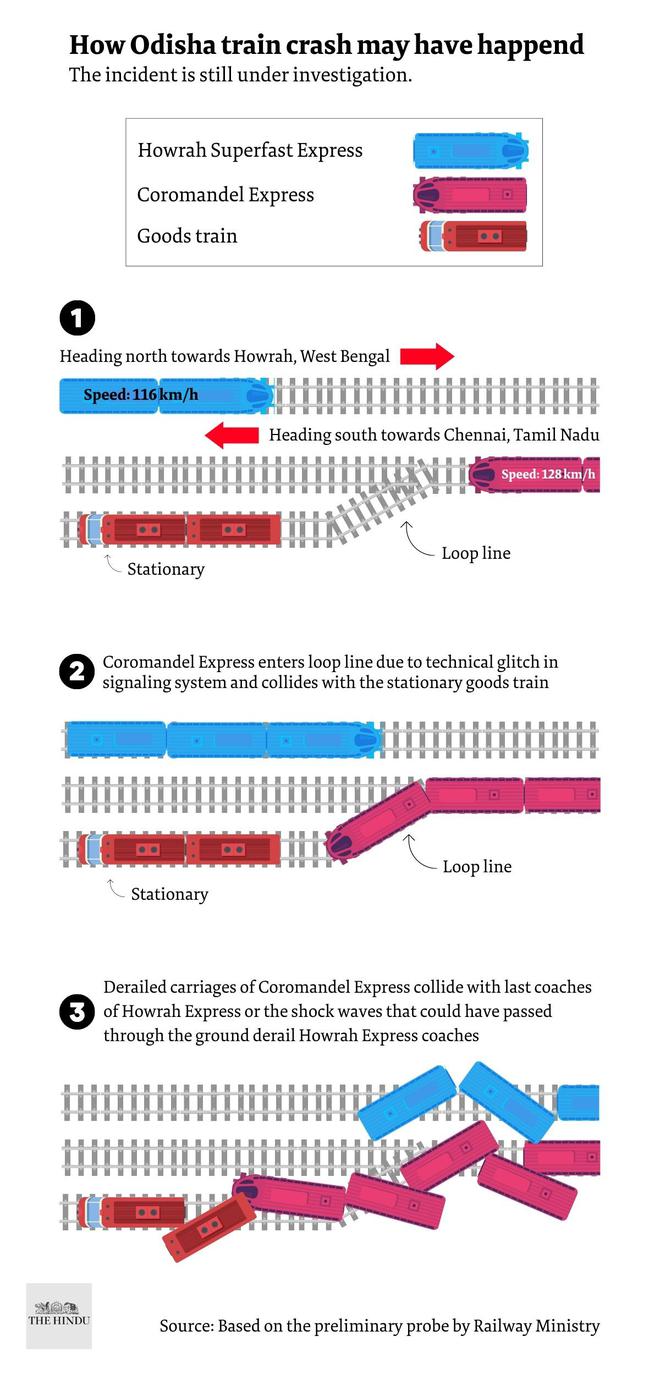A senior Indian Railways official who was part of the five-member inquiry committee which conducted a preliminary investigation into the circumstances that led to the tragic train accident at the Bahanaga Bazaar Railway Station in Odisha and gave its report, has disagreed with certain findings.
According to sources in the Railways, Senior Section Engineer A.K. Mahanta was among the five railway officials who conducted a spot inquiry and gave their two-page report, which concluded that a signalling error had caused the accident.

Also read: Odisha train accident | CBI begins probe, collects first-hand report
Though he initially concurred with the four others and signed the findings that Train Number 12841 Coromandel Express entered the loop line, even as the signal was set to pass through the main line, and collided with the stationary goods train, Mr. Mahanta chose to retract later and recorded his disagreement on a couple of points.
The official claimed that he did not agree with the finding that the Point (17A) was set for the loop line. “Based on observations from data logger report the point was set for normal side (main line). It may be reserve after derailment (sic),” he said.
Dissent note
Mr. Mahanta went on to add that the derailment occurred ahead of Level Crossing Gate No. 94, which was located before Point 17(A), thereby arguing that the accident took place even before the train switched to the loop line. He recorded his dissent note on June 3, 2023, the same day that he also signed the preliminary inquiry report, and gave it to the Section Controller, Kharagpur, the sources said.
Also read: Odisha train accident | Data logger analysis to provide crucial evidence for rail probe
The objections flagged by Mr. Mahanta have surfaced at a time when the Central Bureau of Investigation (CBI) has registered a case and taken over the investigation into the devastating multiple collisions that left 275 passengers dead and over 900 others injured.
When contacted by The Hindu, a senior Railways officer ruled out the possibility of a train entering a loop line when the signal and point were set for passage through the main line. However, there had been instances of the point switching to the loop line when the signal was cleared for the main line. The data logger record would give a clear picture of signal, train movement and derailment, he said.







